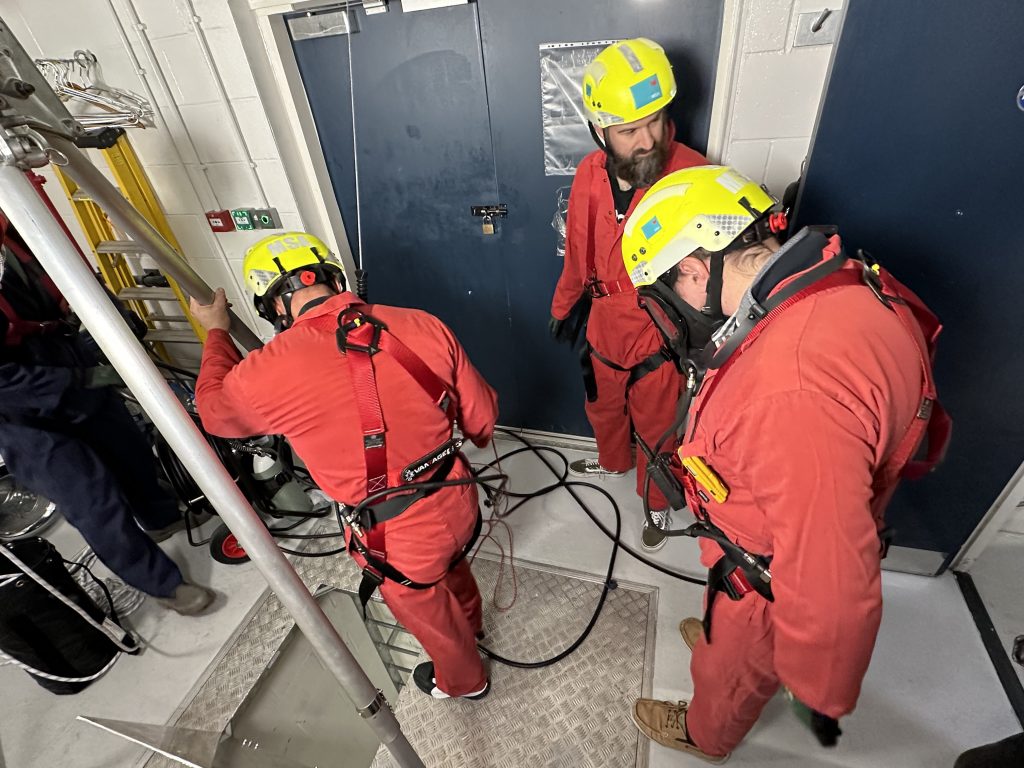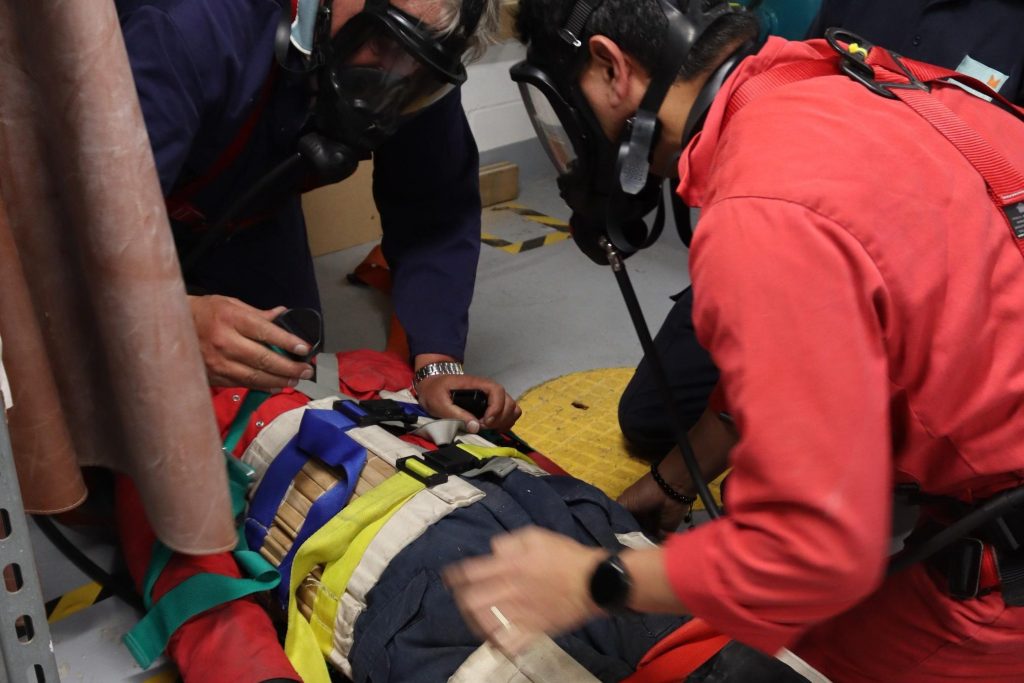Building on the vital discussions from the 2025 Joint Industry Workshop and the UK Chamber of Shipping Safety Culture Conference, it is clear that addressing the risks of entry into enclosed space requires more than awareness – it requires hands-on competency, clear responsibilities, and leadership at the officer level.
Safety officers are responsible for ensuring the ship’s crew is prepared to face emergencies in enclosed spaces. This includes maintaining a safety culture onboard and enforcing industry safety procedures.

Having a Senior Officer who is proactive and educated on industry regulations will encourage crew members to follow suit. Make safety procedures a key topic when onboarding new crew, creating presentations and upskilling to continue the reinforcement of the importance of safety.
Rescue planning must be part of any entry into enclosed space operation. Safety officers should be able to:
The officer must oversee pre-entry atmosphere checks using calibrated multi-gas detectors to monitor oxygen levels, flammable gases, and toxic vapours. The officer should continue monitoring throughout the operation.
An oxygen resuscitator must be readily accessible, and its use must be familiar to at least two crew members at all times. Oxygen resuscitator safety should be maintained by:
Safety officers are responsible for running entry into enclosed space drills. These should reflect realistic conditions, including:
Effective enclosed space management depends on more than technical knowledge. Officers must be trained in leadership and communication, ensuring crew understand not only the ‘how’ but also the ‘why’ behind each safety step.
Training programmes should include:
Safety officers and senior crew have a critical responsibility in the successful planning, execution, and emergency management of entry into enclosed spaces. With practical and scenario-based training, we can begin to maintain the safety of the crew. Training reinforces the safety ethos, reduces risks and saves lives.

The Maritime Skills Academy offers an MNTB Entry into Enclosed Space training course, which we can tailor to meet the company’s procedures. These sessions, which usually run over three days, will provide officers and crew with the necessary skills to evaluate risks correctly, create safe rescue plans, and gain a better understanding of the hazards and emergency precautions when entering enclosed spaces.
With course availability for 2026, you can book here.